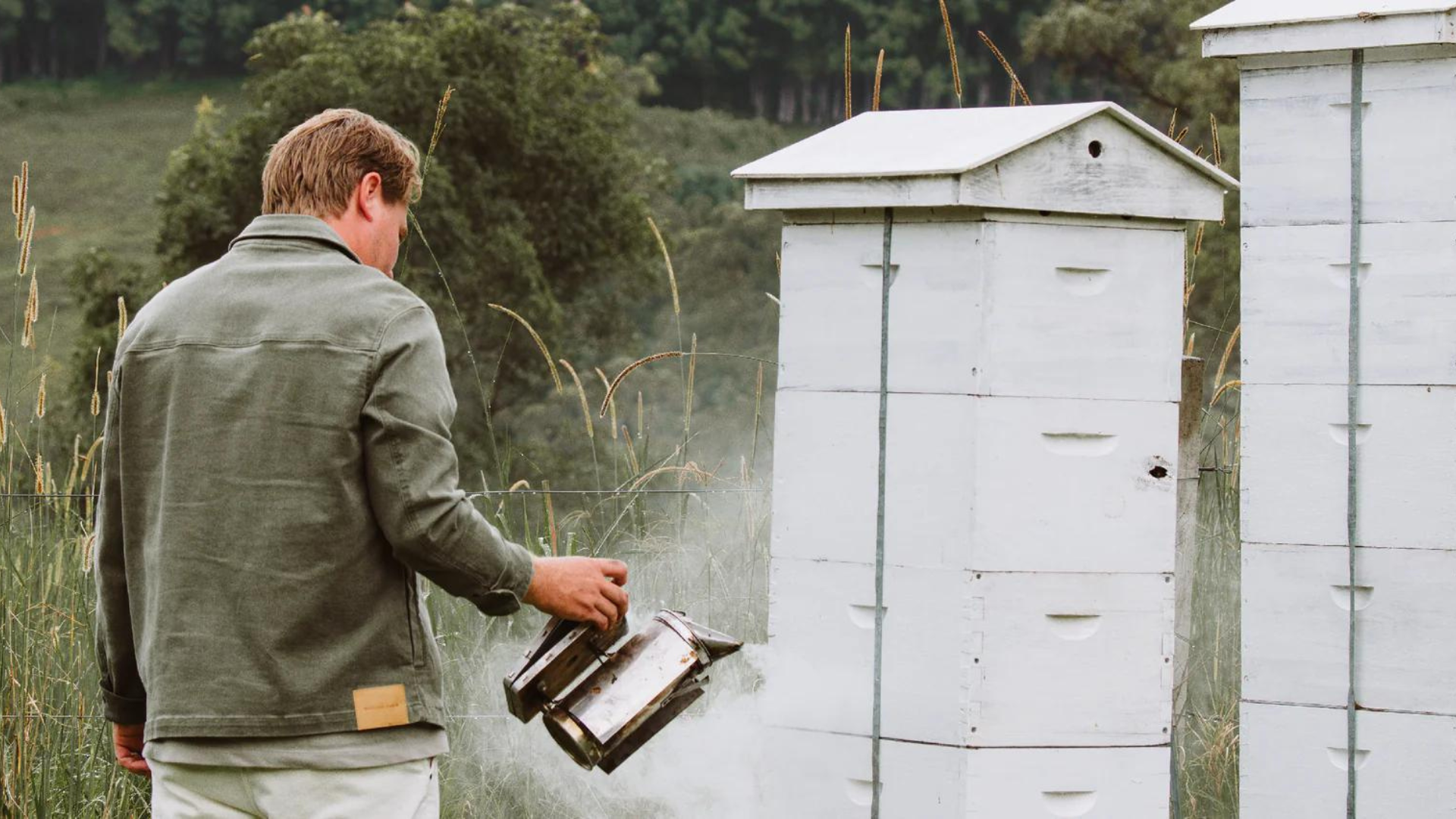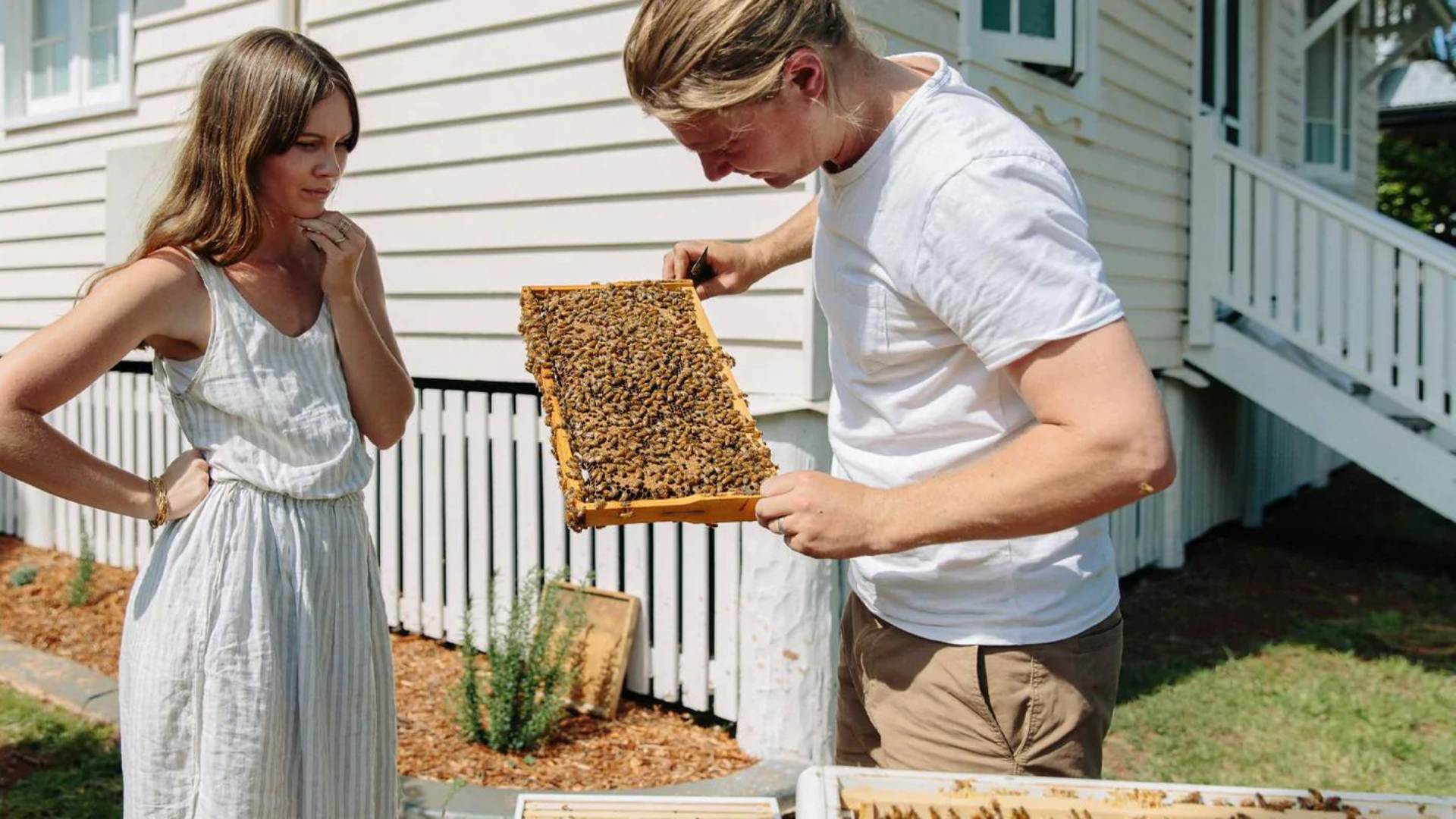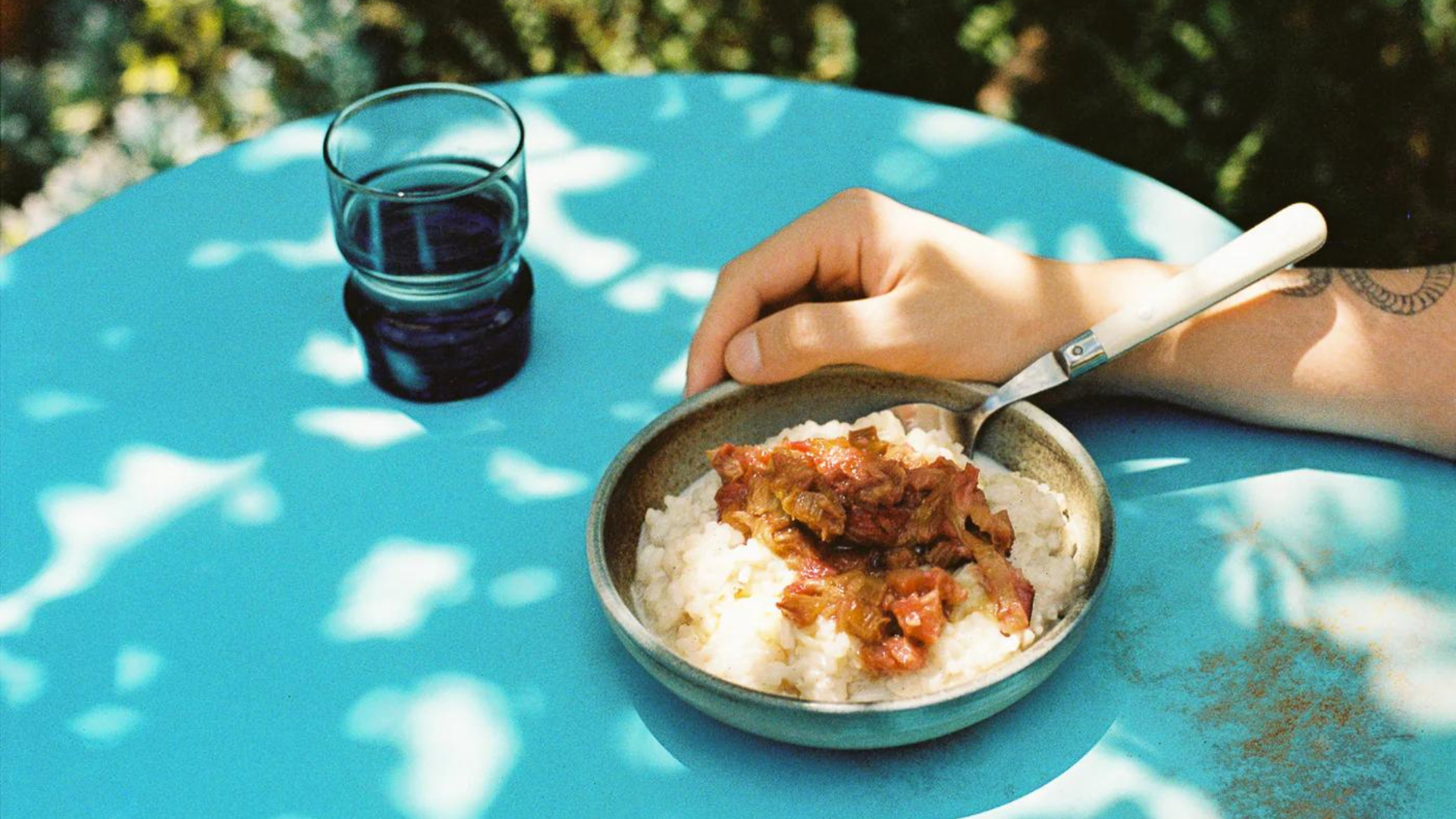
The Varroa Mite Sugar Shake Method
Since varroa mite has been found across New South Wales in recent months, we thought we’d share the easiest, most natural, most kind way to test your apiary for the dreaded pest.
Please note this method is to be used in conjunction with the NSW Department of Primary Industry’s alcohol wash. Registered beekeepers in NSW are to use the alcohol wash method three times a year, at least 16 weeks apart, for the foreseeable future. See here for more details. This method is rough on the bees, but it’s for a greater cause!
You may have heard of the varroa mite recently – the parasite of adult European honey bees and their brood. It is considered the greatest threat to Australia's honey and honey bee pollination plant industries, and should be taken really seriously by all beekeepers.
When we got into beekeeping in Canada, the varroa mite was a really common problem, so when we heard it had made its way to Australia recently, we wanted to share the sugar shake method we learned. There are other ways to test, but this is the least aggressive and most natural way for your apiary.
When the varroa mites are dusted with icing sugar, the granules stick to their feet and they can no longer grip the surface they are clinging to – sneaky! It makes them fall off the bee into the white sugar where you can see them easily.
Before you start, we just want to say that you should understand safe handling techniques before opening a hive like this. This is intended for experienced beekeepers.

How to do the sugar shake test for varroa mites
You’ll need a jar with some mesh secured around the top (canning jars with rim lids are perfect for this), some pure icing sugar (not icing mixture), a sheet of old cardboard, a white bucket or dish, and all your beekeeping gear.
Half fill the bucket with clean water. Place a heaped tablespoon of icing sugar into the jar.
Light a smoker and open the hive to be tested. Shake some bees from three combs containing honey bee brood onto cardboard. If brood is not present, shake bees from one comb taken from the centre of the cluster of bees. If you find the queen on these combs, place her back into the hive.
Scoop or pour about 300 bees (half a cup) into the jar. Place the lid on the jar to prevent bees from escaping.
Gently rotate the jar for 2 minutes, ensuring all bees are dusted with sugar. Wait a few minutes (you can reassemble your hive while waiting), and rotate the jar a second time for 2 minutes. Be careful not to lose any sugar.
Gently shake the icing sugar (and any mites) through the holes in the lid into the bucket of water. The sugar will dissolve and any mites will float on the surface of the water.
Release the bees from the jar onto the ground close to the hive entrance in case the queen is present.
What to do if you find varroa mites
The mites are reddish-brown. Here are some photos to help you identify them.
Examine the empty shaker jar and lid for varroa mite. Inspect the water surface too. If you find any, carefully place them into a small jar with methylated spirits and place the jar in a cool position away from sunlight.
It is important that when Varroa mite is found or even suspected to be present in an apiary that it is not spread to another apiary. This is advice from Agriculture Victoria:
- Don't mail or forward any Varroa mite (and other mites and insects), until advised by an apiary officer from the department. Never take live specimens from the apiary as this may help to spread the parasite or pest.
- Don't remove bees or any hive components from this apiary as this could help spread the mite.
- Place overalls, veil, gloves (and gauntlets) and hat in a plastic bag and leave them at the apiary site until advised by our apiary officer.
- Before leaving the apiary, inspect your vehicle to make sure that there are no bees trapped inside or on the radiator. Spray and remove any bees that could be carried from the apiary. Check the tray of the truck, ute or trailer as well. Any boxes of combs and other hive material on your vehicle which bees might have entered must be left at the apiary.
- Thoroughly wash your hands, hive tool, smoker and any other equipment to ensure Varroa mite is not carried from the apiary.
- Use a fine-toothed comb or brush to remove any mites that may have lodged in your hair or beard.
- Check clothing for any 'passenger' bees that could be carried by you when leaving the apiary. If another person is with you, have them check your clothing for passenger bees.
How to report varroa mite in your apiary
If you see or suspect Varroa mite is present in your apiary, you must notify an apiary officer as soon as possible. The easiest way to do this is to ring the national Exotic Plant Pest Hotline on 1800 084 881 (24 hours a day, every day of the year).
Remember, notification is required by the Livestock Disease Control Act 1994.

